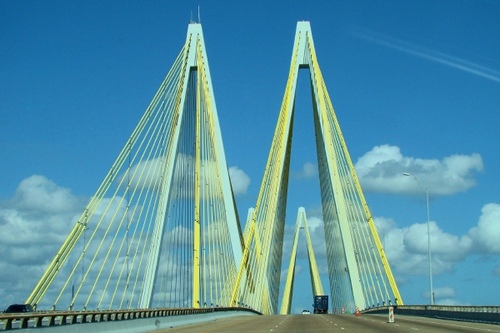Morgan's Point, Texas. (original) (raw)
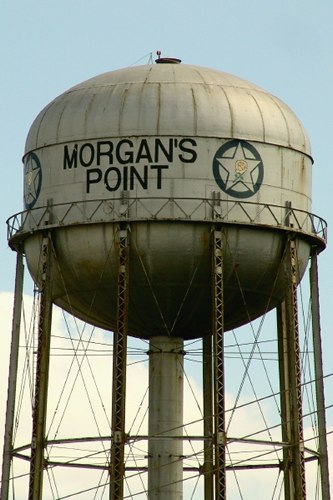
At the extreme NW corner of Galveston Bay where Buffalo Bayou and the San Jacinto River meet. "A beautiful peninsula containing Ross Sterling home and terminating at the Houston Ship Channel at Barbours Cut." - Ken Rudine, October 22, 2007
History in a Pecan Shell
Settled as early as 1822, the first resident was Nicholas Rightor. The next owner was Johnson Calhoun Hunter who bought it from Rightor in 1824.
The land changed hands again in the late 1820s when Joseph C. Clopper and his three sons bought it and renamed the Point after themselves. Over the years the place had been known as Rightor's Point, Hunter's Point and Clopper's Point, but after one of the Clopper sons sold the property to James Morgan in late 1834, it�s been Morgan�s Point ever since.
Morgan built a store and became the agent for a colony called New Washington, which hardly materialized when during the Texas Revolution the site was occupied by Mexican troops who burned the structures after appropriating anything of use
A Confederate shipyard was built at the mouth of Goose Creek in 1864 and it was about this time thought was given to dredging a channel. In 1876 the shipping channel had been completed by Charles Morgan.
"The causeway between Hog Island and Baytown was built in 1933 and the Morgan's Point ferry began operation then between Hog Island and Morgan's Point. The ferry service ended in 1953 when the Baytown-La Porte Tunnel was built at the site of Spillman Island in the ship channel. (Washburn Tunnel is located in Pasadena area; it opened in 1950.) The Fred Hartman bridge replaced the Baytown-La Porte tunnel in the 1990s. After the Morgan's Point ferry was closed, people continued to use the causeway to go to Hog Island to go fishing and crabbing. In 1961, Hurricane Carla destroyed the causeway and the connection to Hog Island." - Wanda Orton, Columnist and retired managing editor, Baytown Sun
The population was a mere 50 just after WWII, reaching 650 by the early 1950s. 1980 seems to be the high-water mark for Morgan�s Point with 716 residents reported.
A State Historical marker marks the Morgan's Point Cemetery, and James Morgan�s estate of Orange Grove has a marker of its own.
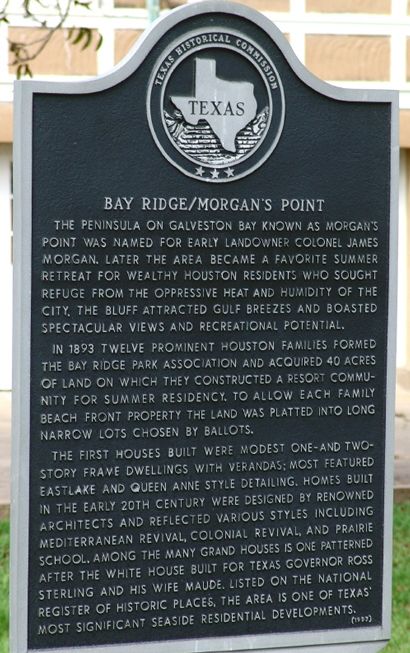
Bay Ridge / Morgan's Point Historical Marker
Photo Courtesy Ken Rudine, October 2007
Morgan's Point Landmarks
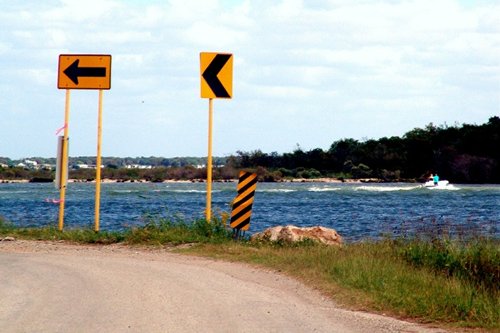
Morgan's Point
Photo Courtesy Ken Rudine, October 2007
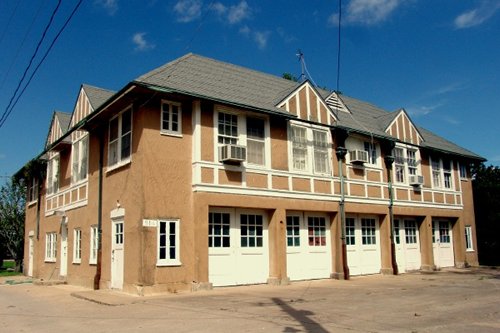
Old fire station donated to Boy's Harbor
Photo Courtesy Ken Rudine, October 2007

The Governor Ross Sterling Mansion
515 Bayridge Rd.
Morgan's Point
Photo Courtesy Ken Rudine, October 2007

The Governor Ross Sterling Mansion marker
Photo Courtesy Ken Rudine, October 2007
The Governor Ross Sterling Mansion
Architect Alfred C. Finn of Houston drew the plans for this scaled-down replica of the American White House for oil executive Ross S. Sterling (1875-1949). Completed in 1927 on the residential "Gold Coast" stretching from La Porte to Morgan's Point, it stood as a landmark on the Houston Ship Channel. By night its roof deck commanded a view of the lighted industrial plants in this region.
Layers of stone, concrete, air space, and plastered lath form the thick exterior walls. Deeply sunken foundations and huge beams running the length of the structure give it hurricane resistance.
With 21,000 square feet of floor space, this was known as the largest private residence in Texas at the time it was built. It has seven fireplaces, 15 baths, 34 rooms-- including a dining room seating 300 guests. Silver and gold inlaid sconces, fine cared woods, and Tiffany chandeliers form some of the adornments. There were elaborate facilities for recreation and for efficient housekeeping. Sterling and his wife Maude Abbie (Gage) had several children.
Ross Sterling was governor of Texas 1931-1933. In 1946 he donated his mansion to a civic club and it was used as a juvenile home until 1961.
1978
More Texas Historic Homes

WWII - Lamar Fleming III Memorial plaque
Photo Courtesy Ken Rudine, October 2007

Container storage in Morgan's Point
Photo Courtesy Ken Rudine, October 2007
Texas Escapes, in its purpose to preserve historic, endangered and vanishing Texas, asks that anyone wishing to share their local history and vintage/historic photos, please contact us.
